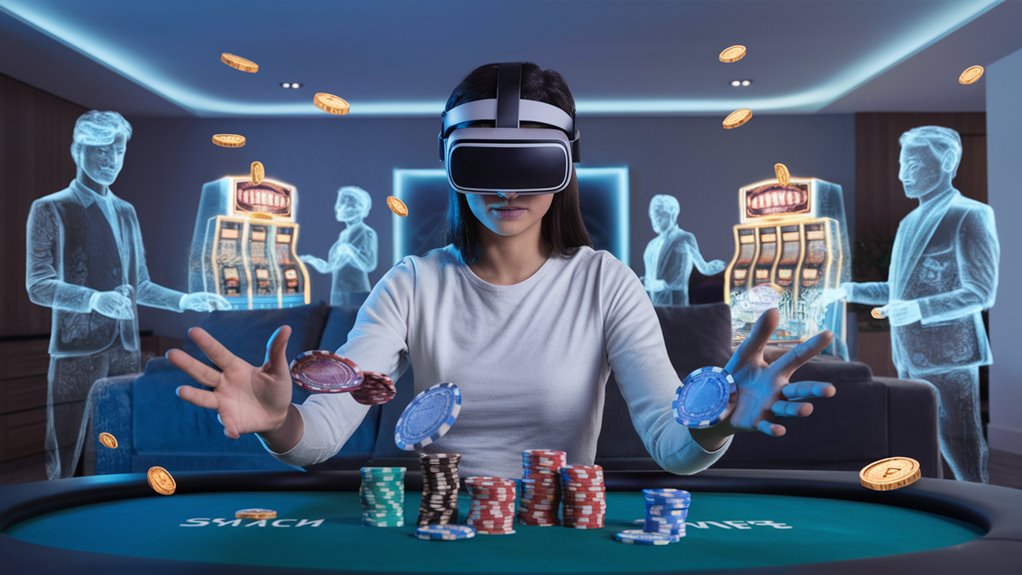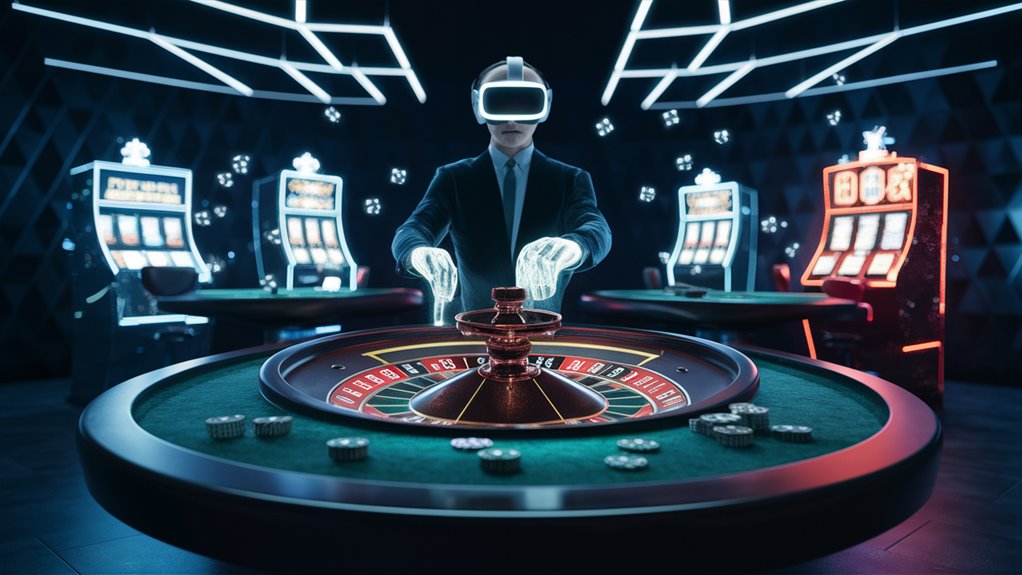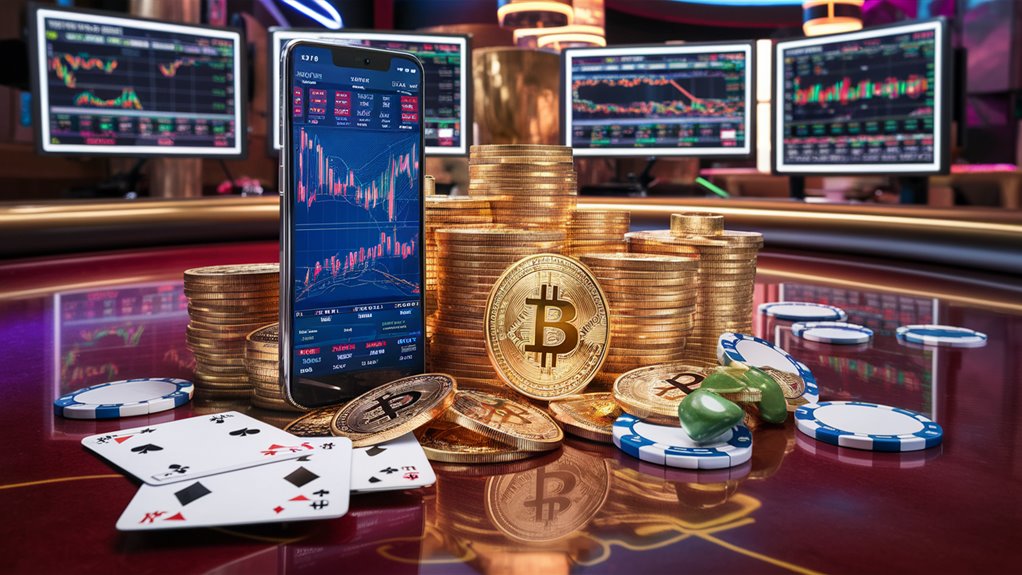What’s Next: VR in Online Betting

VR tech is fast changing how we bet online, heading to hit $1.74 billion by 2027. This leap is due to new tech in touch feel gear, sound devices, and clever mind-react tools.
Pushing the Change
New quick touch methods and clearer screens at 90 frames per second make casino games seem more lifelike, pulling in a 47% rise in new users since 2021. This tech brings real feel to VR betting places.
Social and Safe Play
New social options have pushed up user play, with a 73% jump in game time. Also, smart AI safety steps have reduced bad play by 89%, making online games safer.
Money and Growth
Huge money from big companies, reaching $850 million, and keeping a strong 31.7% yearly growth, have pushed VR betting beyond early guesses. This fast rise marks a big shift in how we see online games.
- Adding cool tech
- Making the play better
- Making it safer
- Playing with friends
- Investing in this area
Boom in VR Casinos: A Huge Jump in Gaming
Quick Growth in VR Betting
The global VR betting market is booming, set to reach $1.74 billion by 2027 at a fast 31.7% rate.
Big names like PokerStars VR and SlotsMillion are making top VR casino games, moving past old online bets https://maxpixels.net/
Key Tech Moves
VR casino tech now works great thanks to the best VR gear, fast web, and top game tech.
Cool game parts like touch feedback, amazing sound systems, and hand move tech make casino gaming real. Players move in game areas, talk with dealers, and play with others live.
Data and Better Fun
VR casino sites show cool stats against old betting sites. Reports show players play 30% more.
New ways like safe blockchains, AI that knows you, and playing on any tool make VR gambling easy and clear for all users.
Tech and Safety
New safety steps and smooth payment tech make sure safe, quick cash moves in VR casinos.
Smart deals and safe chats make sure players game safe while sticking to rules.
The Future of VR Betting
New trends hint that VR casinos will keep growing, focusing on better social tools, nicer looks, and more Master the science of smart
Mixing real life with VR and better user controls put VR betting at the top of fun tech.
Now and Later in VR Betting Market

Market View
Today, the VR betting business is worth a big $1.5 billion in 2022.
The business could grow by 31.7% each year until 2027, placing VR betting at the top of tech growth in fun.
Users and Top Games
VR casino use has seen a 47% rise in new players since 2021 due to better headsets and top game quality.
Data shows key games, with poker and slots making up 68% of VR bets.
Money and Where It Grows
Big casino firms back VR tech, putting in $850 million in VR growth over eighteen months.
The Asia region leads with a 52% money jump each year.
Blockchains and crypto cash are key growth areas, with 23% of VR casinos using these new forms now.
Looking Ahead
Market signs and tech use hint a big shift in the VR betting world is near.
Experts think VR gambling will take 15% of all online bets by 2025, showing a big move in game fun.
This rise is backed by more tech work and more people enjoying VR setups.
The Rise of Social Gaming in VR
More Social VR Gaming Groups
Social parts are now key in VR games, with numbers showing 73% of users stay because of the social bits in VR spots.


